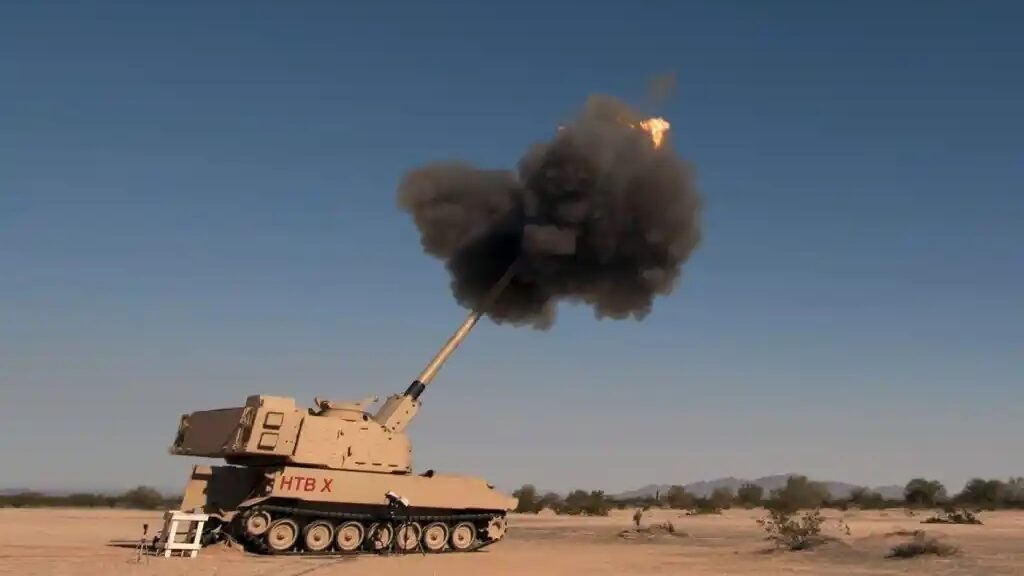
Extended Range Cannon Artillery (ERCA) firing. (Photo by Kristen Rounsaville / U.S. Army Contracting Command)
WASHINGTON — Lawmakers have questions about the Army’s planned incremental upgrade to BAE Systems’ Paladin M109A7 self-propelled howitzer under the Extended Range Cannon Artillery (ERCA) program and want to know if it would be better to build the new tracked-platform from the ground up.
House and Senate conferees recently unveiled the compromise language in the FY23 National Defense Authorization Act and it has now passed in the House. If President Joe Biden signs the bill into law, the Army is only allowed to produce 20 ERCA prototypes and must provide authorizers with a ERCA production strategy that considers the “comparative cost and value” of a new-build versus the current Paladin-modification production approach.
Over the past several years, the service built 18 ERCA howitzer prototypes by adding a 58 caliber, 30-foot gun tube to the tracked vehicle Paladin so that soldiers can launch 155 mm rounds out to 70 km. Although the Army plans to conduct an operational assessment of the weapon in fiscal 2024, it also wants to begin a competitive competition in late FY23 where it will search for a company to integrate platform components together, Ashley John, the public affairs director for the Program Executive Office for Ground Combat Systems, told Breaking Defense today.
“The program is targeting a request for proposal release in the fourth quarter of FY 2023 and contract award in the fourth quarter of FY 2024,” she added. John did not detail the specific integration work required under the plan but said it will be a “competitive award.”
But it appears lawmakers want to codify a consideration of more dramatic options. More specifically, the NDAA language says that before the service issues the solicitation next year, defense authorizers want additional details on how much it will cost to transform each Paladin into the ERCA platform, including costs accrued from leveraging government-owned facilities. These figures should then be compared against the anticipated price tag of hosting a “full and open competitive approach using best value criteria for post-prototype production source selection.”
It is unclear how the service may compare the two options, in part, because it is pursuing an iterative approach where it may later add in a various technologies including a government-designed, 23-round autoloader into the howitzer to speed up the rate of fire.
In addition to work on the howitzer and potential autoloader, the future weapon will use a “supercharged” propellant to fire current and future munitions such as the M982 Excalibur, XM1113 Rocket-Assisted Projectile, and XM1155 Extended-Range Artillery Projectile (ERAP).
Sullivan: Defense industry ‘still underestimating’ global need for munitions
National Security Advisor Jake Sullivan said that there are “no plans” for another Ukraine supplemental at this point.


























